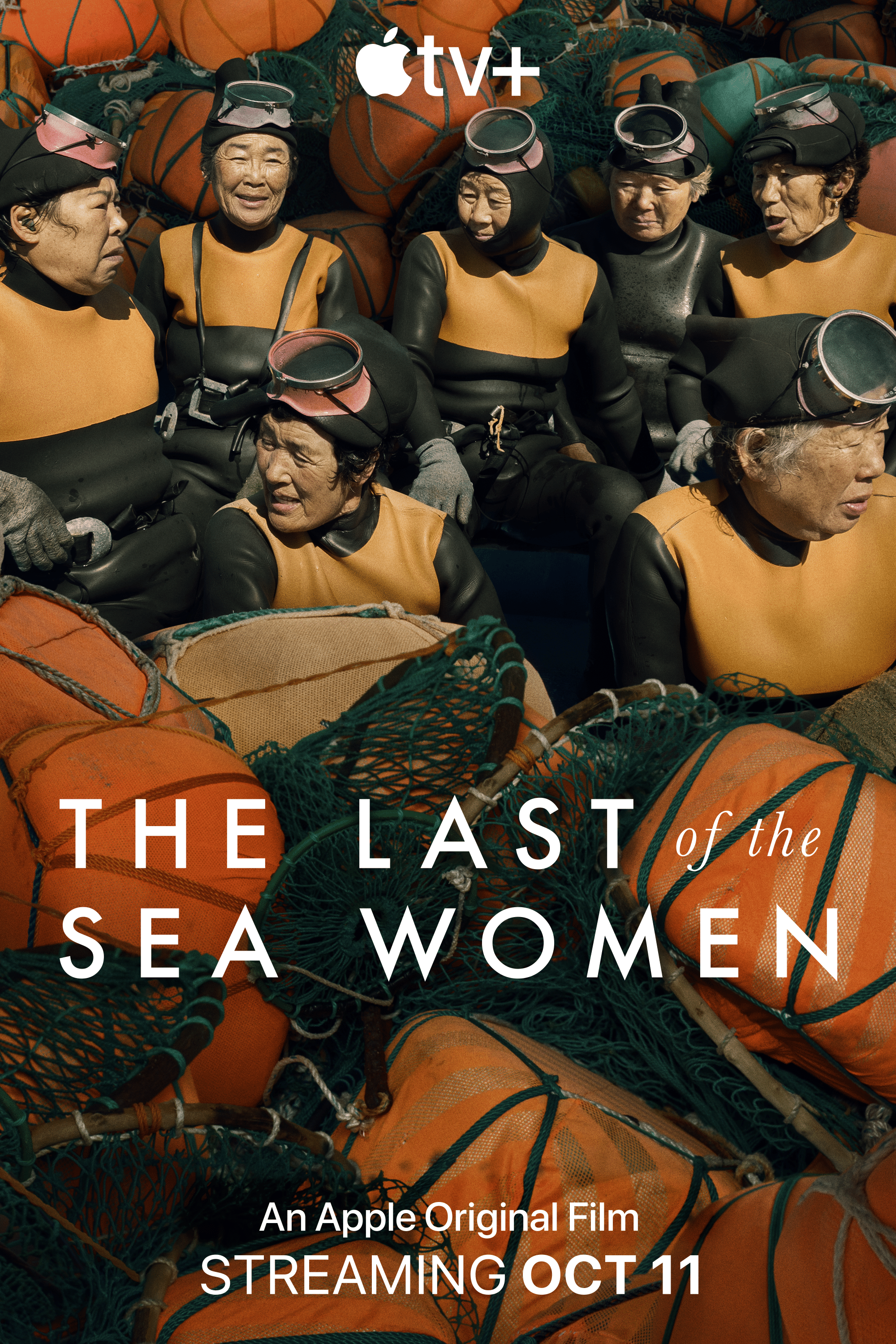
- Director
- Sue Kim
- Rating
- n/a
- Running Time
- 86 minutes
- Release Date
- October 11th, 2024 (Apple TV Plus)
Overall Score
Rating Summary
In Jeju Island, South Korea there is a tradition of fishing and harvesting seafood where trained women, called haenyeo, dive into the ocean for long periods of time without oxygen to collect fish. A traditional occupation for the women of the island, at one point, there were 30,000 haenyeo out of a population of 200,000 but nowadays, their numbers have since dwindled to around 4,000. Most of the divers, now ranging in their 60s, 70s, and 80s, are experienced explorers that continue to lose their physical abilities the more they dive into the sea. This world sets the stage for director Sue Kim’s The Last of the Sea Women.
Using a mix of interviews with footage narrated by a voice-over of the subjects, the best example of this was perhaps where Kim shows beautiful takes of diving while some of the haenyeo describe their lives over the scenes. The approach helps to connect with these lovely ladies who briefly talk about their lives while it still thrives to impress visually. However, the director does not attach herself to a single form when constructing her film. As Kim balances the voiceover with talking head interviews, the film also crosses into observational territory once it shifts to a political analysis.
Furthermore, the director adds social conflict in the form of the discharge of nuclear wastewater from the 2011 Fukushima nuclear power plant disaster. Jeju island is between the ocean currents of the Pacific Ocean, and the millions of liters of discharged water would circulate in that area, therefore exercising the roles of these ocean guardians. Protesting in the island’s streets to bring attention to their cause, one is invited to speak at a United Nations assembly to address their reality. Ultimately, the film is at its best when it focuses on the political and ecological aspects of the story.
Meanwhile, the renewal of the haenyeos also plays a major part in the film. Though it presents fascinating subjects, such as Jeonmin and Shohei, it starts to become repetitive. Constantly circling back to the need for new divers, the film often lands on the same note. Though the interactions between the newer generation of haenyeos and the “aunties” are sweet and the bonding moments between them are powerful to watch, they do not last nearly long enough. In the end, the lack of new haenyeos can be attributed to the traditional manner of harvesting and the exigence of a long training explains the hardship of this function. Nonetheless, it feels redundant.
The Last of the Sea Women delivers a fascinating portrait of a traditional occupation at risk: the haenyeos. They are courageous female divers who put their lives in danger by refusing to use oxygen cylinders. It is a powerful tale when it focuses on the history and the politics that may end their whole activity. However, it spends a lot of its time repeating itself over moments that fail to provide as much substance to do justice for the complex issues they represent.
still courtesy of Apple TV+
If you liked this, please read our other reviews here and don’t forget to follow us on Twitter or Instagram or like us on Facebook.
Brazilian film writer. He is also a producer and executive producer for Zariah Filmes. Member of the International Film Society Critics Association (IFSCA), International Documentary Association (IDA), and Gotham and Media Film Institute.
Discover more from
Subscribe to get the latest posts sent to your email.
